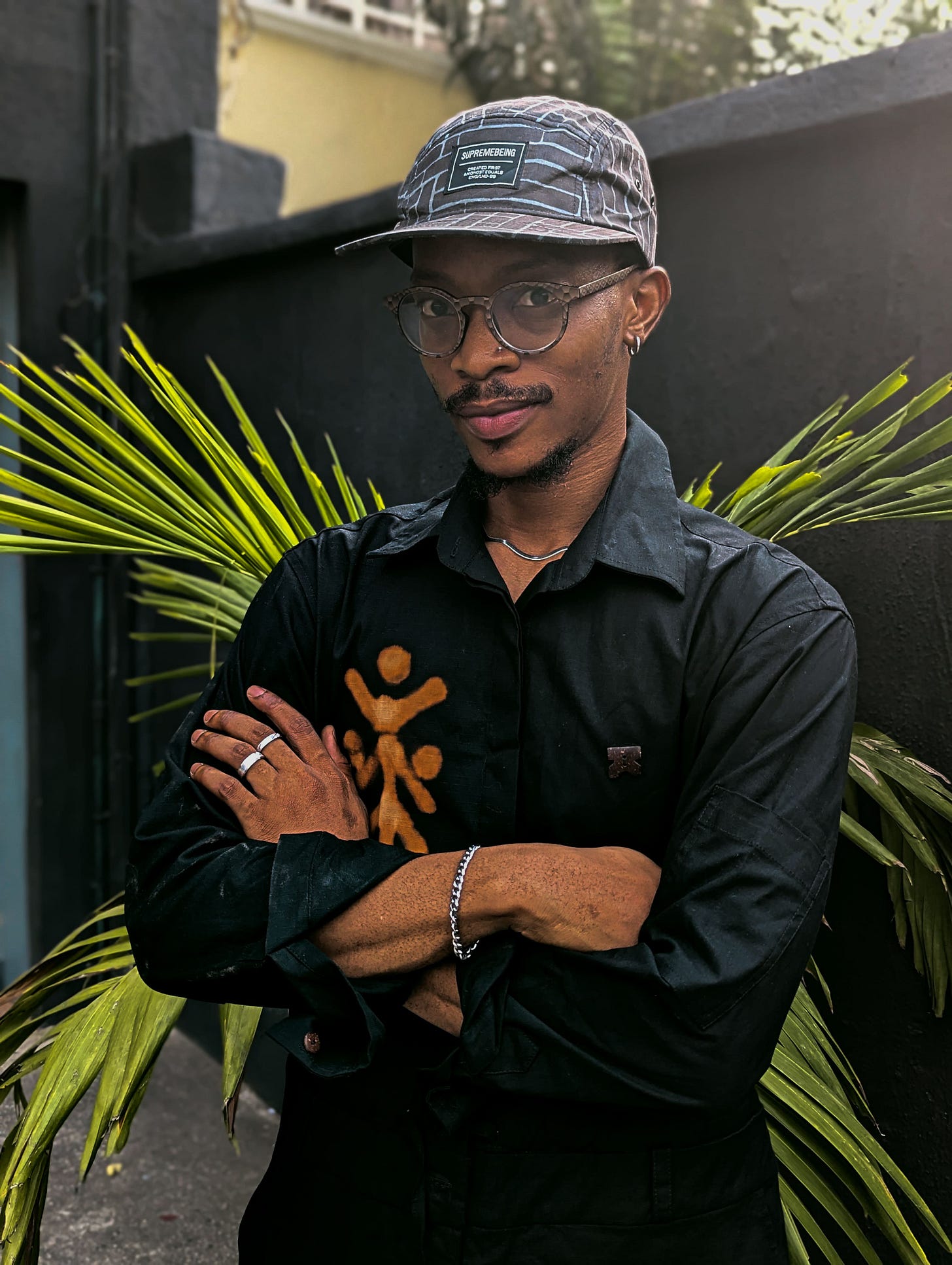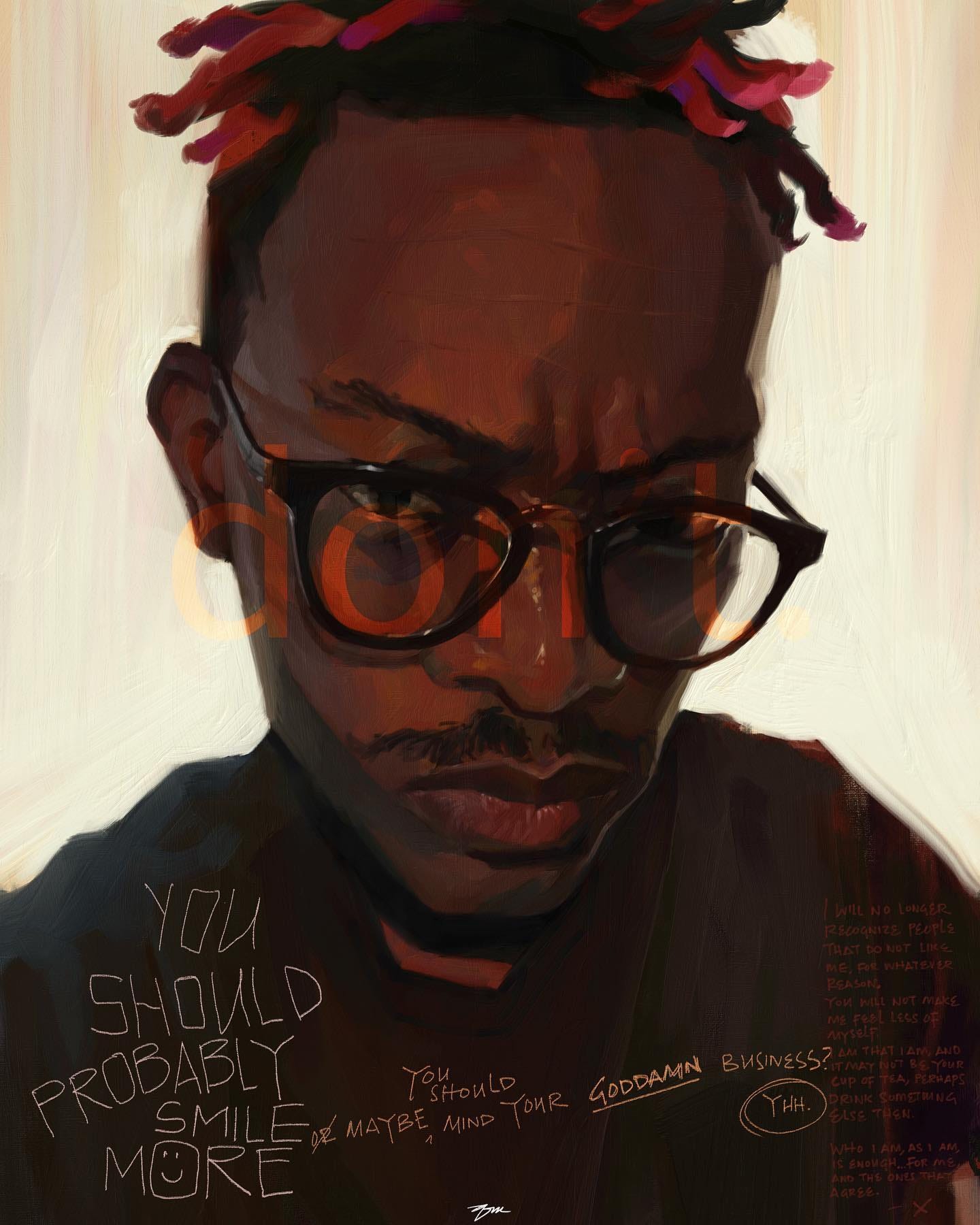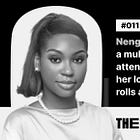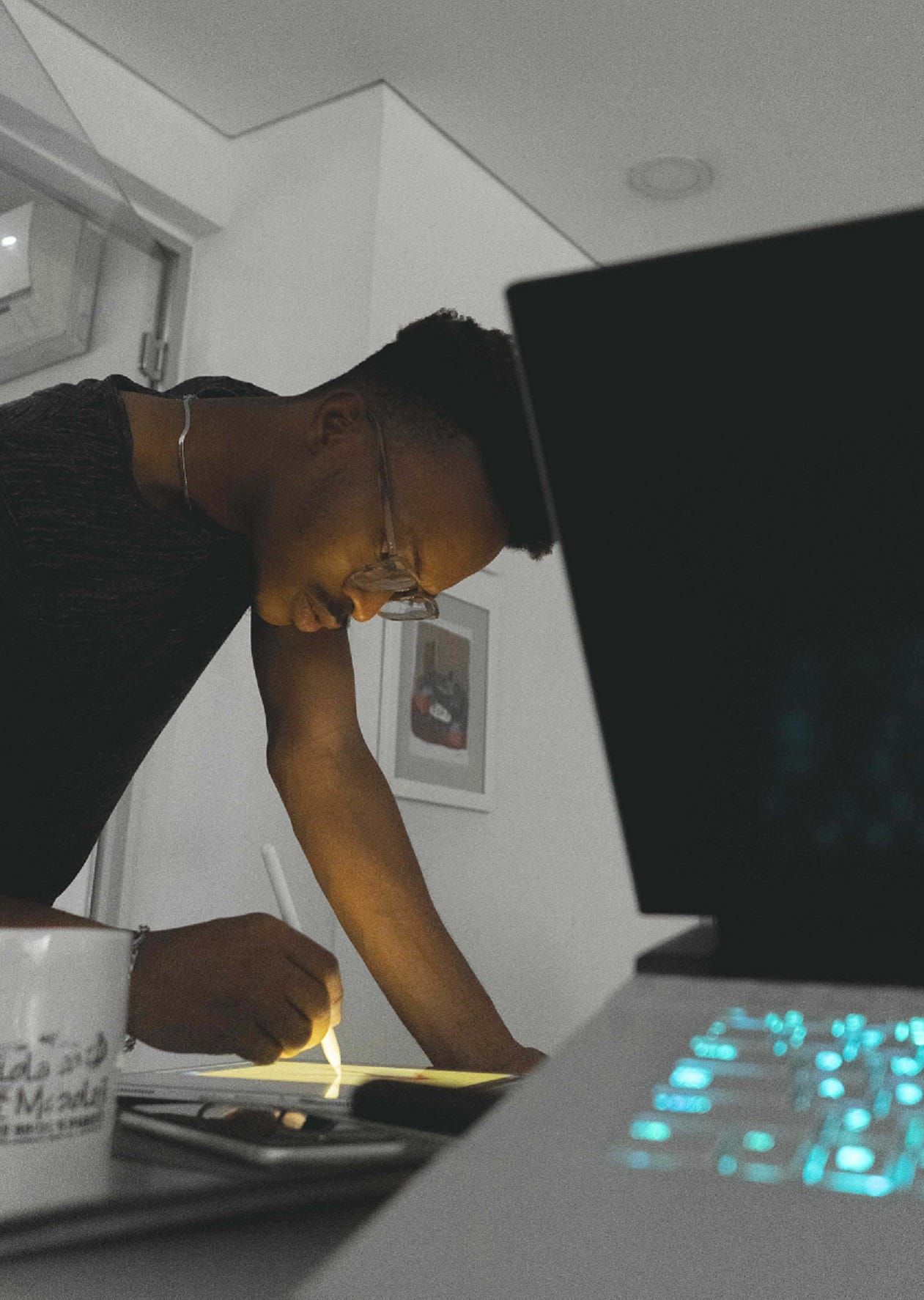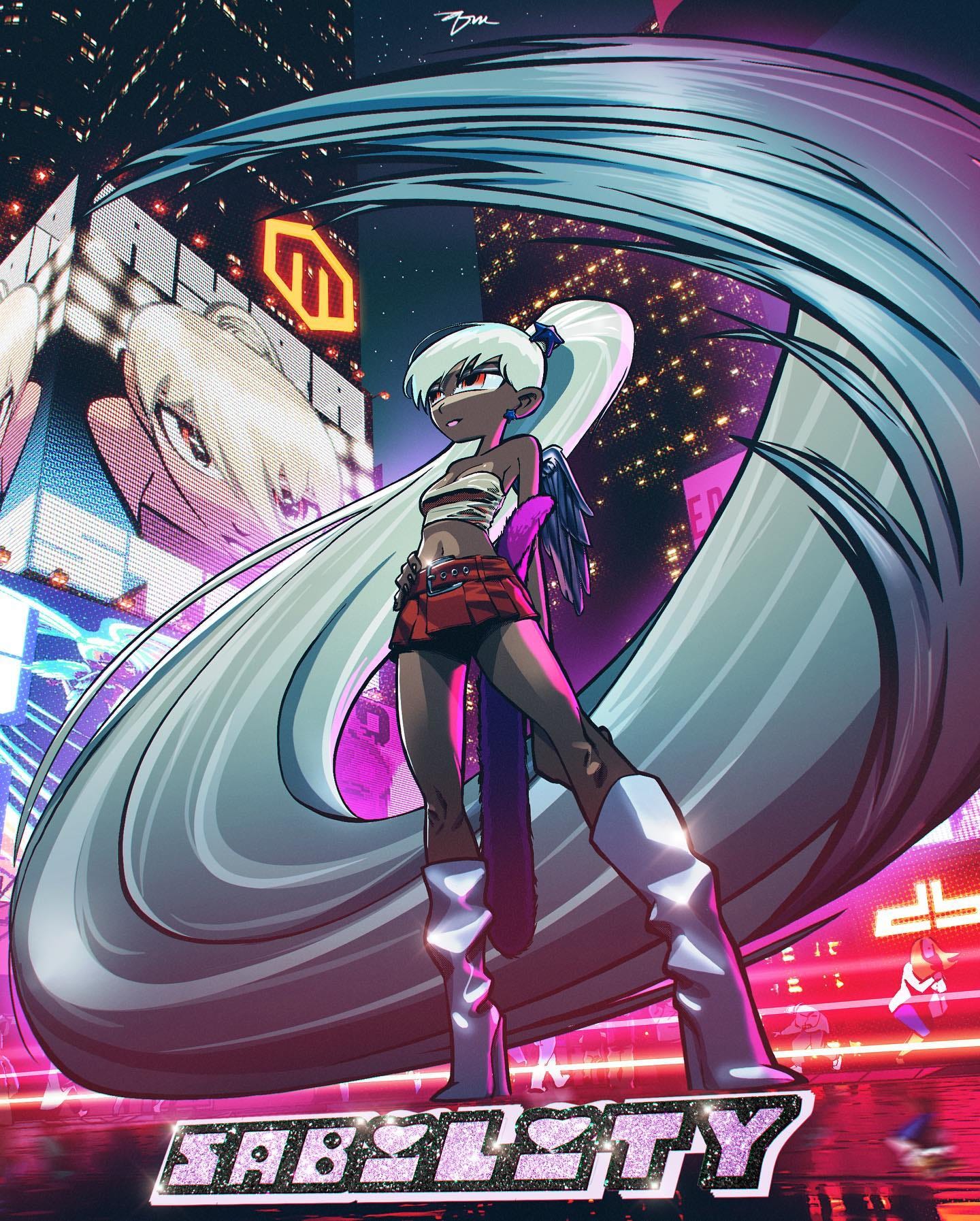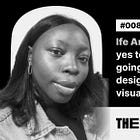Sorunke Quadri (Qvxdri): On being the 'art guy' as a kid, discovering digital art while studying architecture, and wanting to be a household name — #015
As a kid, I simply had a passion for art. I was that ‘art guy’ in school. I did it purely for the fun of it but also to fulfil my innate desires... I ended up studying architecture.
Hi, thank you for joining us for another edition of our interview with African Creatives. In this edition, I spoke with Sorunke Quadri known as Qvxdri, a visual artist with a background in architecture. Qvxdri holds an MSc. in Architecture but after half a decade of practicing architecture, he’s widening his focus to capture other aspects of art and design such as fashion, furniture, and product design.
If you are interested to know how he got started, what drives the work he does, the challenges he faces as a creative and how he navigates them, his favourite projects, the people that inspire him, and the people and brands he would love to work with, you should continue reading. You will definitely love and enjoy reading this!
Tell us about yourself
My name is Sorunke Quadri, known as Qvxdri. I am a visual artist with a background in architecture.
I have lived in Lagos my whole life and I still do. I studied architecture at the University of Lagos (UNILAG). I also have a Master's in Architecture and have been practicing for about 6 years.
How did you get started with art? What led you to visual art?
As a kid, I simply had a passion for art. I was that ‘art guy’ in school. I did it purely for the fun of it but also to fulfil my innate desires.
While transitioning to a senior secondary school level, I opted to be in the Science class. As a result, I ended up studying architecture as it was the most artistically inclined part of science.
After getting into the university, I couldn't keep up with traditional art anymore because of how hectic studying architecture was. I discovered digital art in 2012 through a senior colleague who was an illustrator. I saw him using a WACOM tablet to draw and was impressed with what I saw, so I ordered a tablet and started experimenting with it. I loved digital art because I could keep all of my works in one place - on one device, unlike traditional art. I also enjoyed it because it made it easy for me to keep track of what I was working on because I am the kind of person who works when I am inspired and drop it when I am not. In that sense, digital art was very comfortable for me but I did it mainly for the passion because I wasn’t really taking commissions at the time.
After I finished my master's program in 2019 and was about to get into architecture full-time, I got recommended for a gig to illustrate something for an upcoming artiste, Rema - now a very major artiste. I decided to try it out. I submitted a sketch and he loved it.
This was my entry into art-as-a-business. It was my first time making a cover art that was commercial (I had made cover art for some friends before this but they were passion projects). It was while working on this cover for Rema that I realised that I could do this art thing commercially, as another stream of income albeit still as a side gig.
In 2022, I finally decided to put architecture on the shelf for a while to focus on my art, and that is the journey that I am currently on.
How would you describe your experience since you decided to focus on art?
I think it has been very awesome and successful. It has been a great one year so far. I have been able to make artworks that mean something to me – which I value a lot. These are not the random studies, paintings, or commissions I typically make. I am currently making curated artworks with stories telling people the truth of who I am while inviting them to discover themselves as well.
After I quit my architecture job, I went on a brief hiatus. I quit social media and went into my own shell. I plunged into introspection to look into who I am and who I wanted to be. I realised that I was beginning to get influenced a lot by external factors, so the aim was to purge myself of that.
During that break, I started a collection of paintings that I called “ TLOQ (The Life of Qvxdri).” They all contain these seemingly mundane portraits that expose me entirely, but only if you’re able to decipher them.
I also had an art installation last year (2022) because I wanted to do something in my first year of being an artist. I also did it because I wanted to show people what I was experimenting with, at that time. It was a very nice experience, and I aim to do much more.
How would you describe what you do to a 5-year-old?
I paint pictures that tell stories.
What is your day-to-day routine? What does a typical day look like for you?
My day typically starts with me waking up between 5 - 6 am to say my prayers. After this, I jump into my iPad or laptop because I’ve found this is the best time for me to create – something about the quietness is soothing and centering.
After some time, I switch to doing architecture work and send out some drafts and submissions. Then I take a snack and go back to bed.
When I wake up the second time around, I order some food and continue working until the end of the day. On the evenings that I have outings, I go out with friends and come back to probably continue working or go to bed.
In between projects, I also work on administrative and management tasks - which I honestly don't really like.
I mostly find myself mentally switching between being an expressive artist, a pragmatic architect, and an overworked sole creative director. I don't usually get a lot of sleep especially when I have deadlines and it can be very telling on the body because I break down more often than normal.
What do you enjoy most about what you do? What is the most satisfying thing about your work?
The process of conceptualisation is the best part for me. I enjoy research but the process of going through ideas to see what works before eventually landing on a final one is something I enjoy a lot. It feels like uncovering the truth. It is like trying to set a Rubik’s cube. You know what you're essentially trying to achieve i.e. to get similar colours on the same side, so you start switching and moving things around until you get your desired result.
The process of moving things around, trying different layouts and designs, and erasing your sketch to try something else before you eventually land on something that feels good is usually fun. It feels like striking till you find gold. The best part of this is getting those raw and fresh ideas out.
Related interview
What is the best career investment you have made as a creative?
It has to be getting my iPad and an adjustable laptop table that allows me to keep working while I am in bed. I chose the iPad because when I initially made the switch to digital art I used a Wacom tab that needed to be plugged into my laptop to work. It was cool at first but after a while, I felt like it wasn't very intuitive and decided to get an iPad. The iPad changed everything because with it I could draw and work literally anywhere – and I do. It is the most valuable asset I have right now.
What are some of the challenges you face as a creative?
My biggest challenge is the fact that I like to stay by myself and don't really like to put myself out there which is not great for someone trying to grow in their career because networking and visibility are very important. I recognise that I may have certain gifts and potential for growth but the major challenge is how to get my work out there.
There is also the challenge of power supply which can significantly affect my work rate/workflow.
Also, having to do my own administrative work has presented its own hurdles.
How do you navigate these challenges?
I have been blessed to meet people who are good with this kind of thing so when I have issues that I am trying to navigate, I reach out to them. For example, I just learnt about art residencies recently. A friend also spoke to me about galleries recently too. Sometimes, I talk to them when I am working on a project; I ask for who and where I can get certain things to achieve my goals. I am still educating myself on how to do these things.
As for power, it is not something I face regularly but it's annoying when it happens. And when it does, I could visit my former workplace, a café or a friend’s place.
Take us through your process and workflow. How do you go from the brief to the final output?
The brief is a very important and interesting part of the process. The brief needs to be defined because it determines where and how I go about things. I encourage my clients to make a mood board and give a visual reference during the brief. After the brief and meeting, I start creating and sharing sketches based on my understanding of the brief for their comments before moving forward.
Once a sketch has been approved, I go on to develop the art properly and share the output with them for more comments and feedback. I make sure to avoid situations where they give comments later that could have been shared earlier because it tends to set the project back and give me unnecessary stress. Once it gets approved, I switch into full gear until completion, then I share the final output with them.
What are the essential gadgets, tools, and software you use for work daily?
As I mentioned earlier, the adjustable laptop desk is a very important tool because it helps me to keep working even while in bed. I use an iPad to paint and sketch ideas that include art and design. I mainly use Procreate for my illustrations. I also use Adobe Fresco and I love it because it allows me to simulate traditional paint textures. On my laptop, I use Photoshop, and Adobe Illustrator and have had to learn to use Adobe Premiere Pro and After Effects to make animated artworks.
For Architecture, I use Revit, SketchUp, Vray, D5, and Lumion religiously.
Check out: 10 African digital products and platforms you should know and use as a creative/creator
How did the Covid-19 pandemic and lockdown impact you and your work?
The pandemic influenced me in two ways: the way I would like to experience art and the type of art I’d like to make.
While everyone was restricted to their space because of the pandemic, we tried to connect virtually. I started to think about a way to virtually connect in the metaverse. I’m not a developer, so I couldn't really pursue the idea. After a while, I started to see things along that train of thought. I saw Facebook coming with Meta and I was like, ‘Damn, that's my idea!’.
Consequently, the idea of immersing people in an alternative augmented and virtual reality with art is what I have been working on. It's quite cost intensive but it's something I have started to focus on and have to achieve.
In an art installation titled ‘With Love, From Lagos’ that I hosted in December 2022, we had these AR-enabled merchandises that were activated with an Instagram filter. With this, we were able to make otherwise still artworks come alive as animations. The pandemic era was the genesis of this pattern of thought and direction.
In terms of the type of work I made, I think I was a little depressed when the Covid death reports started to get intense. I made paintings that conveyed hopelessness, sadness, and darkness. I didn't post most of them but they really influenced the theme of my art, going forward as they echoed more melancholy.
How do you handle creative blocks and rejections as a creative?
For rejections, I don't take them too personally. I like to think that I am my own biggest fan and critique. If I am okay with it, then I am fine and if I am not, then I just need to work on it. For commissions, I take my clients’ feedback objectively and not as an indication of my abilities.
As for creative blocks, I have had way too many of them for them to stop me now. I have come to understand that it is a phase and I have to go through the emotions and just ride the wave.
What is the task you don't enjoy doing but you have to do?
I don’t enjoy making presentations and writing proposals. However, in order to achieve these expensive goals of mine, someone has to do it.
What are the favourite projects you have worked on?
WLFL (With Love, From Lagos) is one project I love because I was in the process of developing a new style when I worked on it, but mostly because I’d recognised a potential to expand on this experiment, to tell the stories of my people, to immortalize them, celebrate them, and hopefully share these unique stories with the rest of world.
I also really enjoyed making the cover art for Sability. It was a chance to merge some knowledge from Architecture practice with my Artistry, and I look forward to doing more of that in the future.
TLOQ (The Life of Qvxdri) is one project I put my soul into and it feels very cathartic to me.
What keeps you motivated to keep creating? How do you stay creative?
I am often inspired by other artists. When I don't feel like creating, I just go online to immerse myself in a nice body of work and this revitalises my passion for art. Sometimes it is a piece of music, film, an exhibition, and sometimes, dance. Basically, anything that is creative helps to keep me inspired.
How do you relax and have fun?
I tend to go all out when I want to have fun. Last year was the ‘rave era’ for me; it was pretty wild, but I think I am out of that mind-space… for now. I have a number of wild and creative friends who I like to go out to have a good time together with.
I sometimes go to the movies but I am more of the ‘go out at night’ to shout, dance, jump and have some fun kind of guy.
Who are the creatives that inspire you?
To name a couple, I am currently inspired by Sam Spratt and Salehe Bembury.
Who are the people you would love to work with or collaborate with?
Bidemi Tata, Donald Glover, or Niyi Okeowo.
Check out: How To Build Meaningful Relationships As A Creative
What brand(s) would you love to work with?
Nike and Zaha Hadid Design.
What would you be doing if you were not a designer?
It would probably still be something along the lines of art and design like fashion, interior design, or industrial design.
What advice do you have for someone who is just starting out or is at the early stage of their creative journey?
My advice would be to trust your intuition. You need to trust that you will make the right choice for yourself as a creative. If you choose your creative path and know that this is truly what you want, the drive will keep you going no matter what happens along the way.
Read also
What would you consider success and fulfilment in your career when you look back in the next 20 years?
Being a household name. I want you to say the name ‘qvx’ and people already know you're talking about something creative, innovative, and special. I don't plan on doing just one thing. I plan to do a lot of creative things, not just art or architecture.
Whose story would you love to read about?
Sir Duks. My goat.
Do you have anything you would like to plug in or promote?
I'd like to plug my concept space called dbq where I explore alternative ideas. It's still in the early stages but I'm excited about the opportunities that this platform will allow me to prospect and I'd like to invite everyone to tune in!
Thank you for sharing with us!!!
Connect with Qvxdri on Twitter, Instagram, and LinkedIn.
Thank you for reading and don’t forget to like and share the interview.
See you next time!!!
Follow us on Twitter, Instagram, and LinkedIn to stay up to date.





